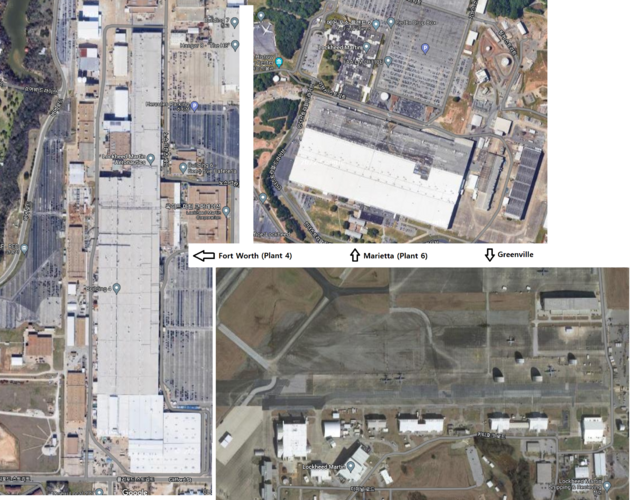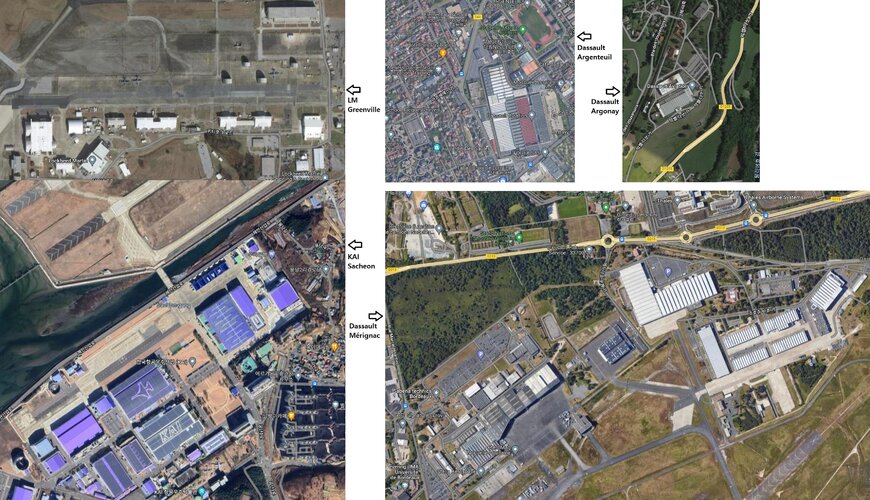The biggest helping hand in recent success of Rafale was LM themselves, or more to be exact the transition of F-16 production lines from FW to Greenville for the sake of F-35s on FW. They've ceased production for a few years during the transition and with current capacity of GV facility they are only able to manufacture four F-16s a month. Not a small number by any means, but their backlogs are full until late 2020s. Add to that the increased program cost of F-16 Block 70/72 which nullified its major advantage over Rafale.
To give some perspective to what I wrote, I've made a comparison of the LM FW plant with the new GV plant for F-16 as well as few other plants. The satellite image scale differs a little bit but its only marginal.
View attachment 690323
View attachment 690324
In terms of CAPEX of GV plant, LM said they are looking for ways to expand from current capacity of four F-16s per month, but in reality, they aren't even using the full tooling capacity and are instead known to be manufacturing closer to three aircrafts per month in the moment. Other than that, the GV plant was also where they were supposed to build T-50As had this plane been selected for T-X but that didn't happen. Should the USAF select TF-50 for the ATT or the USN choose T-50A for UJTS, GV plant will indeed see some major CAPEX effort, which could also mean increased F-16 manufacturing capacity should the need arise. We'll see how the outcome of both programs go, but since the selection of ATT and in conjunction the UJTS are only planned for mid-late 2020s, the CAPEX could come too late for the F-16V FMS. Besides, LM and KAI aren't really expecting TF-50 to be selected in the ATT program for obvious reasons. Guess they see more chances in the UJTS.




















